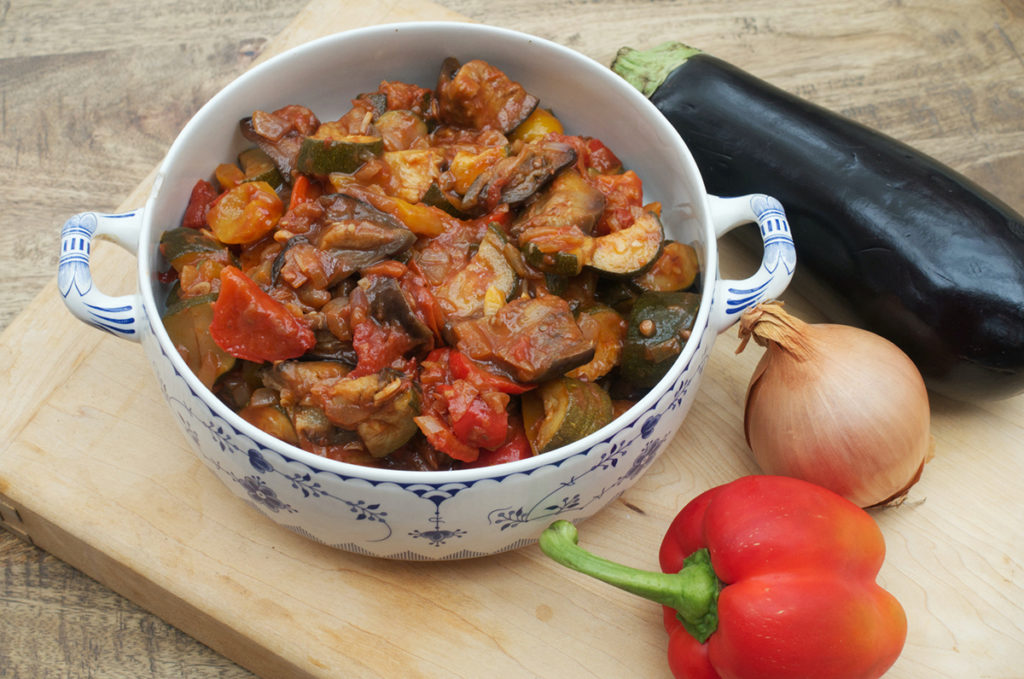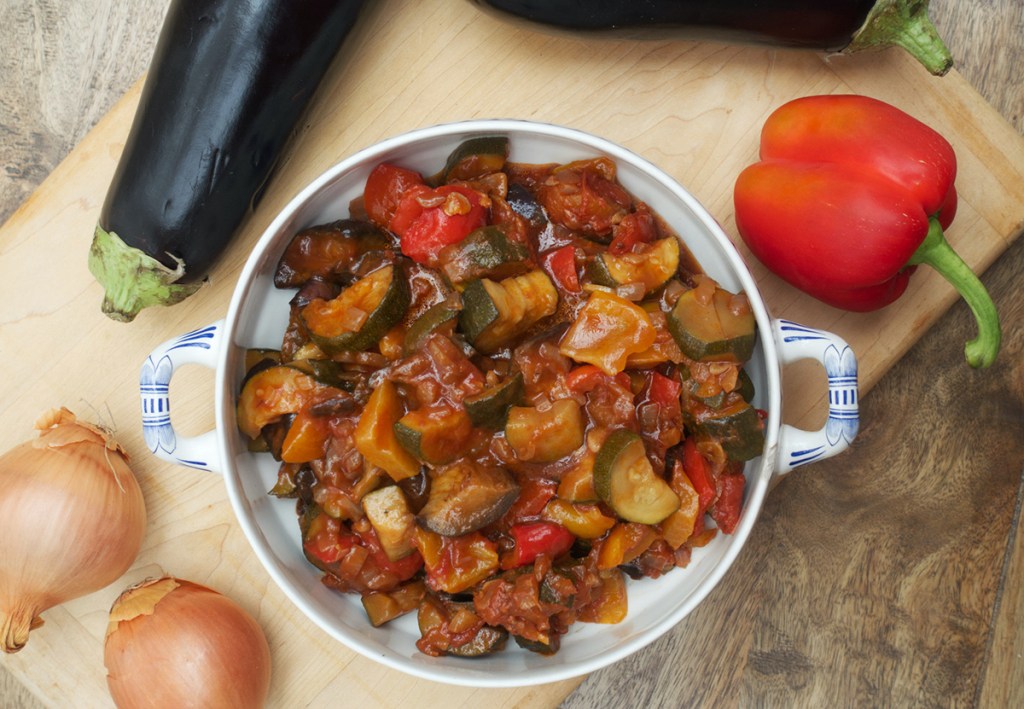There aren’t many veggie stews that can lay claim to being immortalized in popular culture. Fewer still that could then complain about being grossly misrepresented. But then ratatouille is no ordinary vegetable stew.
Ratatouille is a Provençal dish, made by gently cooking eggplant, zucchini and red peppers, with a tomato sauce flavored with onion, garlic and herbs. It is, in many ways, extremely simple. But for all its simplicity, it remains the subject of confusion.
If you watch Pixar’s Ratatouille, you will see the terrifying food critic, Anton Ego, reduced to a Proustian state of rapture when served what we are told is ratatouille, making him recall his childhood and his mother’s cooking. However, that beautiful pile of perfectly sliced and layered vegetables that we see on screen is not the traditional ratatouille. It is instead confit byaldi, a variation on the more rustic ratatouille, created by French chef Michel Guérard and made famous by Californian super-chef, Thomas Keller. Non-coincidentally, Keller served as a food consultant on the film, and the producer Brad Lewis, spent time interning at Keller’s The French Laundry. While Guérard and Keller’s version is a dish in its own right, it is far closer to a tian, another variation on the original dish, which finely slices and layers the various vegetables, in a circular pattern.
This is probably because, whisper it, ratatouille is not that pretty. Using the traditionally rough-cut vegetables makes the whole thing look less Michelin-starred and more, well, like a stew. But it is delicious, significantly easier, and runs no risk of drying out. It’s also a dish that you can make on the stove, rather than needing the oven.
Many will tell you that the vegetables need to be cooked individually, to preserve their character and flavor. I disagree: the joy of the dish is the melding of the flavors — and the dish improves with the more time they have to get to know each other. The whole point of ratatouille is that it is more than the sum of its parts. However, it is also vastly improved by browning the vegetables in a healthy amount of good olive oil: overcrowding the pan will just steam the vegetables rather than allowing them to take on color and flavor. For that reason, when I’m making this dish, I find that I do actually cook the individual vegetables separately, but very much for pan-sized logistical reasons rather than anything more hifalutin. But do make sure you use a good olive oil: it’s a dominant flavor in the dish, so you want it to be the best.
Ratatouille really is a dish that will go with anything: it is as happy alongside a bronzed, roast chicken, or whole leg of lamb, as it is with cold cuts or a slice of cold pie. It makes beautiful leftovers: try reheating it on the stove, then creating divots for eggs to poach in, like a Provençal shakshuka, or pile it onto a baked potato. When the weather is hot, it is surprisingly lovely fridge-cold — although if anyone says I have been known to stand in front of the fridge, spooning it directly into my mouth, I will deny everything. Sometimes I think I would serve anything with thick, crusty bread, but truly, ratatouille was made for such a thing.

Ratatouille
Makes: six servings
Takes: 50 minutes
Bakes: no time at all
5 tablespoons olive oil
2 eggplants
2 large zucchinis
2 red peppers
1 large onion, diced
3 large cloves garlic, minced
1 14 oz tin plum tomatoes
1 tablespoon red wine vinegar
½ tablespoon dark brown sugar
¼ teaspoon herbes de provence (or mixture of marjoram, basil and oregano)
- Cut the eggplants, zucchinis and red peppers into chunks — about half an inch square.
- Place a large frying pan over a medium heat and add 1.5 tablespoons of the olive oil. Fry the eggplant, turning with a spatula, until the chunks are golden. Set to one side, add another tablespoon of oil and fry the zucchinis in the same way, followed by another tablespoon of oil and the peppers
- Add the final half tablespoon of oil (no need to wipe out the pan), lower the heat to low and cook the onion until softened but not colored. Add the garlic and cook for a couple of minutes more
- Add the tinned tomatoes, red wine vinegar, sugar and herbs; smoosh the tomatoes against the side of the pan to crush them and cook the sauce for 10 minutes
- Return all the vegetables to the pan and cook the whole thing for half an hour
This article was originally published on Spectator Life.


















